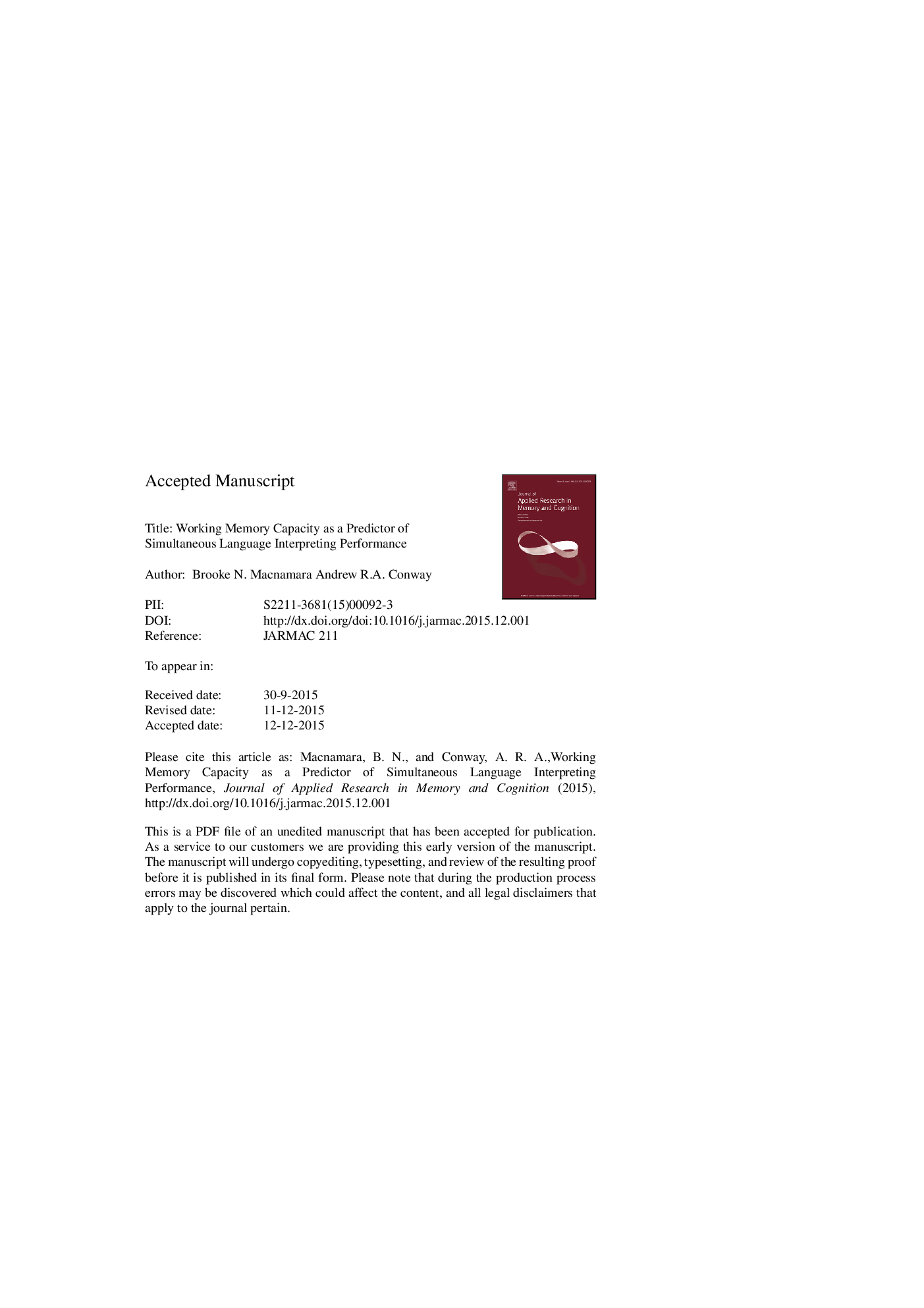| Article ID | Journal | Published Year | Pages | File Type |
|---|---|---|---|---|
| 5034071 | Journal of Applied Research in Memory and Cognition | 2016 | 41 Pages |
Abstract
What is the relationship between working memory capacity and skill acquisition among American Sign Language (ASL)-English simultaneous interpreter trainees? ASL-English interpreter trainees were administered measures of working memory capacity, several other cognitive abilities, and simultaneous interpreting performance over two years. We examined amount of training, initial cognitive abilities, change in cognitive abilities, and initial simultaneous interpreting performance as predictors of final simultaneous interpreting performance. We found that amount of training, working memory capacity, and initial simultaneous interpreting performance positively predicted final simultaneous interpreting performance. Several other cognitive ability measures also predicted simultaneous interpreting performance though working memory capacity yielded the strongest and most consistent results among the included measures. Initial simultaneous interpreting performance and working memory capacity accounted for 73% of the variance in final simultaneous interpreting performance. This finding suggests that interpreter programs could measure these two factors at admission to estimate students' likely success in the program.
Keywords
Related Topics
Social Sciences and Humanities
Psychology
Applied Psychology
Authors
Brooke N. Macnamara, Andrew R.A. Conway,
